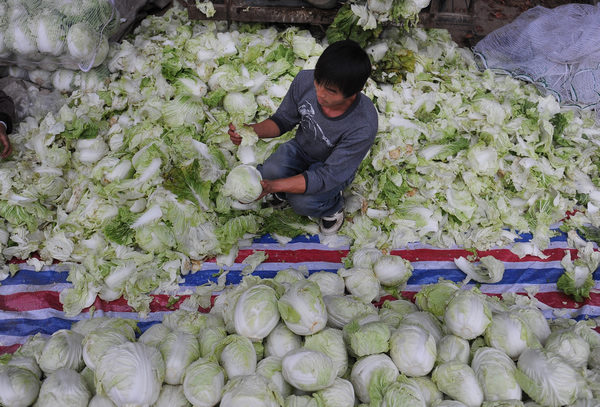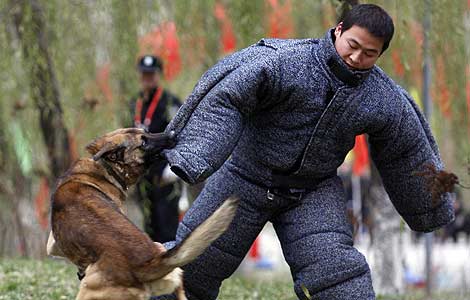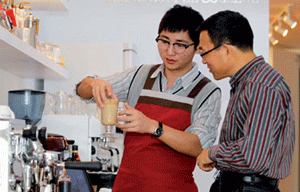Cabbage patch economics
Updated: 2011-12-04 09:00
By Jin Zhu (China Daily)
|
|||||||||
Sometimes too much of a good thing can spell trouble. For China's vegetable farmers, forecasting market conditions can be a whole new learning curve. Jin Zhu reports.
Wang Jianyun is a typical smallholder farming in the suburbs of the Chinese capital. This year he harvested 20,000 kilograms of cabbages, a good harvest by any standards. But it's going to be a cold winter for this farmer. After waiting almost 12 hours at a wholesale market in Daxing, Beijing, he is going home, and there are still 500 kg of unsold vegetables in the back of his truck. "So far, I've sold about 5,000 kg of cabbage. Another 15,000 kg of cabbage are now still piled in the field now," he tells us. The price he got for his cabbages ranged from 14 to 16 jiao, or about 2 cents to two-and-a-half cents. "I'm just trying to end my troubles now, not to make money," Wang, 53, says. He will not be bringing home any profits.
This scenario is common all over China, where a glut of cabbages has decimated the efforts of a whole year. Last year, a kilogram of cabbage had brought in 2 yuan.
Oversupply and dumping by speculators this year are the reasons farmers like Wang will be making a loss this year.
Last autumn, there was a shortage of cabbage in South Korea, which severely affected the annual kimchi making. South Korean traders turned to China for supply and this unexpected demand drove prices up. As a result, opportunistic speculators hoarded vast quantities of cabbage in cold storage and waited for prices to rise again this year.
This short-sighted strategy assumed that demand would continue this year. Local farmers, spurred by the high prices in 2010, also planted more cabbages.
But as the overseas market atrophied, speculators started dumping last year's store. That, combined with the increased planting by farmers this year, resulted in too many cabbages and not enough buyers.
Other vegetables, too, have suffered from the chronic mismatch of supply and demand.
In Nanjing, in Jiangsu province in the east, the price of ginger fell to about 6 yuan per kilogram this year, down from 12 yuan per kilogram last year. In Inner Mongolia, potato farmers were desperately looking for buyers as the first winter frosts approached. Garlic and onion prices, too, have plummeted.
To help ease the farmers' dilemma, the national television networks' agricultural channel sent out calls for community groups to buy up the excess vegetables.
Local supermarkets, schools and company canteens went on a buying spree.
The central government also stepped in with instructions on the ground. "Local officials should take immediate action to help farmers tackle difficulties in selling their produce, and maintain a stable market," a notice from the Ministry of Agriculture said.
But it is not an easy order to execute.
Li Xiande, a researcher on agricultural economics, explains that information asymmetry and insufficient guidance and knowledge leave farmers and dealers out in the cold when it comes to forecasting market trends accurately.
"There is a great number of smallholders in China now, and a timely demand-supply platform with precise information is not easy to set up in a short time frame," he says.
In other words, there are too many small farmers, and they are too scattered to supply an accurate database needed for better supply-demand management.
Forming cooperatives will significantly reduce the farmers' risks, Li says. "Farmers in many developed countries such as US, Japan, and France reduce risks on production and sales by grouping into cooperatives," he says.
By contrast, only a small percentage of Chinese farmers are currently members of such cooperatives.
Farmers, too, need to be educated in the economics of marketing, instead of depending on knee-jerk reactions to high prices one year and then depressed prices the next, a vicious cycle that needs to be broken.
China's farmers need to unite to better control market prices and manage the demand-supply curves.
Li feels that the central government can do more, like subsidies for farmers when there are gluts like this year's. At present, only grain producers in the country benefit from the minimum purchase price policy.












